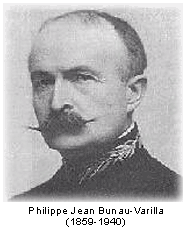Hay-Bunau-Varilla Treaty: Dealing with Panama Direct
 Panama, formerly a department of Colombia, had declared its independence after the rejection by Colombia of the Hay-Herrán Treaty of 1903. The joint efforts of John Hay, U.S. secretary of state, and Philippe Bunau-Varilla, the former engineer for the French canal company and the recently appointed Panamanian envoy to the United States, yielded an agreement acceptable to Roosevelt. Terms of the Hay-Bunau-Varilla Treaty, signed on November 18, 1903, included the following:
Panama, formerly a department of Colombia, had declared its independence after the rejection by Colombia of the Hay-Herrán Treaty of 1903. The joint efforts of John Hay, U.S. secretary of state, and Philippe Bunau-Varilla, the former engineer for the French canal company and the recently appointed Panamanian envoy to the United States, yielded an agreement acceptable to Roosevelt. Terms of the Hay-Bunau-Varilla Treaty, signed on November 18, 1903, included the following:
- The United States was to receive rights to a canal zone which was to extend five miles on either side of the route
- Panama was to receive a payment of $10 million
- Panama was to receive annual rental payments of $250,000.
The financial terms were identical with the ones incorporated into the Hay-Herrán Treaty that Colombia had refused to accept. With the Hay-Bunau-Varilla Treaty, the United States had the legal basis for proceeding to build the Panama Canal.
See other
foreign affairs issues under Theodore Roosevelt.
 Panama, formerly a department of Colombia, had declared its independence after the rejection by Colombia of the Hay-Herrán Treaty of 1903. The joint efforts of John Hay, U.S. secretary of state, and Philippe Bunau-Varilla, the former engineer for the French canal company and the recently appointed Panamanian envoy to the United States, yielded an agreement acceptable to Roosevelt. Terms of the Hay-Bunau-Varilla Treaty, signed on November 18, 1903, included the following:
Panama, formerly a department of Colombia, had declared its independence after the rejection by Colombia of the Hay-Herrán Treaty of 1903. The joint efforts of John Hay, U.S. secretary of state, and Philippe Bunau-Varilla, the former engineer for the French canal company and the recently appointed Panamanian envoy to the United States, yielded an agreement acceptable to Roosevelt. Terms of the Hay-Bunau-Varilla Treaty, signed on November 18, 1903, included the following: